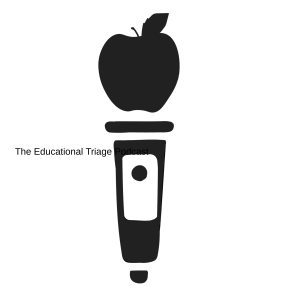
What is Equity and How do we teach it?
Definition: Equity means offering individualized support, to students, that addresses possible barriers, like poverty or limited transportation, other cultural precepts that might affect the learning outcomes, etc.
How do we prepare for and teach equity?
Teachers understand the concept of Equity, but they aren’t really sure how to begin. Many are mired in the concept that Equity has to do with feelings, others believe it has to do with race, some with poverty, and others with other possible barriers. Which is it? Perhaps they are correct - but then again they’re wrong.
Any student with any barrier that causes any struggle to learn is the target of any teaching by equity.
Huh?
Let’s haul our minds back a couple of decades to Gardiner’s Multiple Intelligences. In his work, Gardner displayed information in helping meet the needs for 8 different intelligence types. We would later understand there were far more types of intelligences! Spencer Kagan help workshops, had books, activities, on meeting the needs for many of these students, which paved the way for us to adapt, adopt, and continuing working to help students access the materials and understand the concepts we taught - in their time and in their manner.
Today we have UDL, or Universal Design for Learning. Taking much from Gardner, this, too, begins to weave a tapestry of rich understanding through the complex needs of today’s students. There are many books, videos, and other media that help teachers understand.
But - with the current rash of demands on teachers, this can not only be overwhelming, but anxiety provoking in just thought. Let’s break things down into a simple, yet doable methodology:
- Look at the lesson/Unit/Concept – What and How does the student need to demonstrate in order to achieve the best outcome?
- What are some methods the student can use in order to display/demonstrate this outcome? Can you find more? (don’t think inside the box - ask students, teachers, parents, everyone!!!! for ideas!!!!
- How many examples (and be clear about which types) must a student complete in order to demonstrate mastery and earn a top, middle, or low mark?
- Use your state standards to settle on the Mid-mark - meaning if they meet the standard, then they can receive the equivalent of a ‘C’ grade.
- Can they work on improving their score?
- Be sure there are clear expectations and you have a rubric - perhaps even have the students work with you to create the rubric while using the state standards - using teachable moments to improve learning?
- Be sure to cull from UDL and Gardner in order to continuously create and add to your ideas on lessons. Not all students will grab hold of everything you put out there.
- If students are still reluctant, what needs should have to be met for them to begin feeling motivated enough to do the work?
- How are you scaffolding your work?
- How do you review and encourage review of old skills to keep them fresh?
- How do you encourage diversity of thought and engage everyone to participate while respecting all?
Books on Multiple Intelligences, Cooperative Learning, and Universal Design for Learning:
Multiple Intelligences: New Horizons in Theory and Practise Gardner
Multiple Intelligences in the Classroom. 4th Ed. Armstrong
Multiple Intelligences: the Complete MI Book Kagan
Equity by Design: Delivering on the Power and Promise of UDL Chardin Novak.
What Really Works? With Universal Design for Learning Murawski & Scott
Universal Design for Learning: theory and practice Meyer, Rose, Gordon.
Universal Design for Learning in the Classroom: practical applications. Hall, Meyer, Rose.
Universal Design in Action: 100 ways to teach all learners Rapp
No comments yet. Be the first to say something!